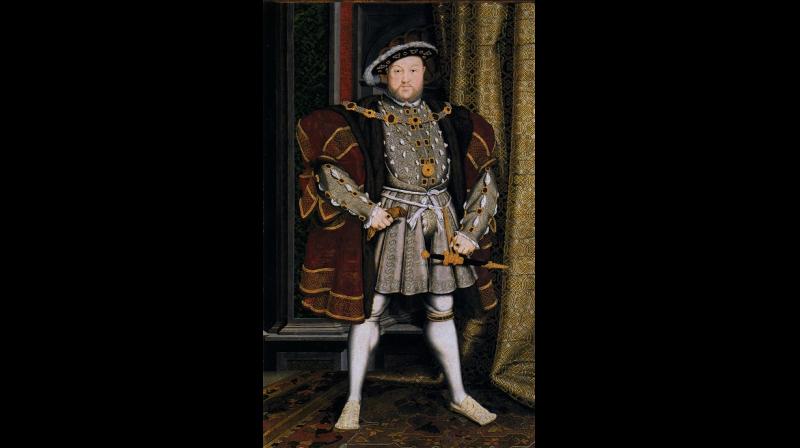Lost Saint Paul tapestry of Henry VIII's found in Spain

A tapestry woven with gold and silver thread - one of Henry VIII's most treasured items he commissioned in the 16 century was recently discovered in Spain, the Daily Mail reported.
It is almost 20 ft wide and depicts the life of Saint Paul. The Tudor monarch in the 1530s displayed it in the Hampton Court, the king's seat of power.
Its Biblical subject had a strong political narrative, as it was commissioned at the time of the Act of Supremacy, an English act of Parliament that recognised Henry VIII as the Supreme Head of the Church of England. Before the act was in place, the Pope of the Roman Catholic Church was recognised as the head of the English Church.
Lost Henry VIII Saint Paul tapestry woven with gold and silver thread is found in Spain https://t.co/vmtOsV235f pic.twitter.com/gSJkS1NDuJ
— Siglov Freudivan (@DerangedRadio) September 23, 2018
Experts say the craftsmanship alone is a dead give away that it could only have been a royal commission. Tapestry experts Simon Franses and Thomas P Campbell, say it was one of his most prized possessions.
Henry VIII had a passion for tapestries and had a collection of almost 2,500 of them. Very few have survived over time. In the report, Franses described this particular one as "one of the most sumptuous and important Renaissance tapestries", while Campbell said it is "the Holy Grail of Tudor tapestry".
The Daily Mail quoted Franses as saying: "The tapestry provided Henry VIII with powerful and unequivocal Biblical authority from one of Christ's Apostles for destruction of anything seen as heathen or ungodly.
"This is the period of the sacking of the monasteries with widespread destruction. Around 1530, there were also specifically a series of proclamations on the destruction of 'heretical books'.
"Here he's basically saying 'I've got religious authority to do this'. He is a political figure and needs to justify and provide authority for the less palatable things that he's doing.
The St Paul tapestries were at the Hampton Court at Henry's death in 1547. Then in the 1670s Charles II used them as redecoration of Windsor Castle. They were last recorded in 1770 before vanishing into thin air.
Now, it is revealed that a Spanish dealer bought it in the 1960s and then sold it to a collector in Barcelona. It was sold again to an unnamed Madrid buyer who sent it to Britain to be conserved.
It will be on display for the public in October at S Franses in St James's London.

